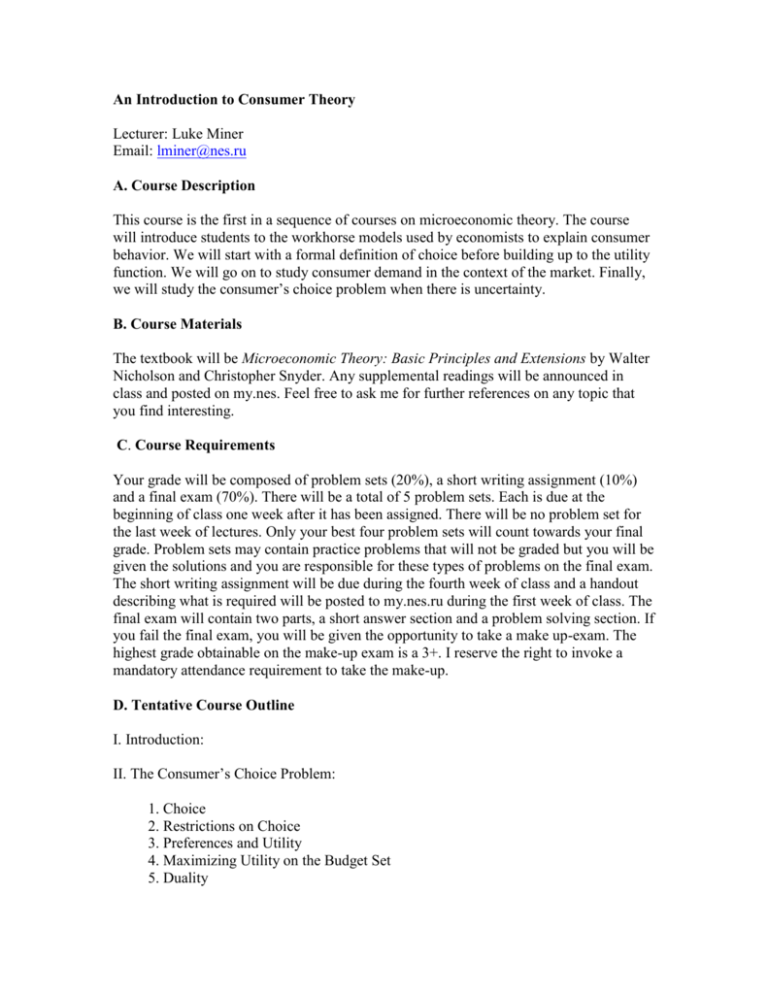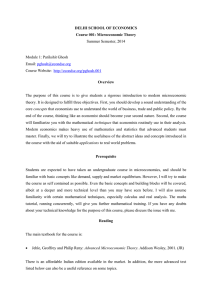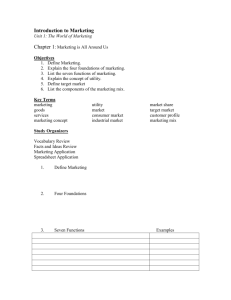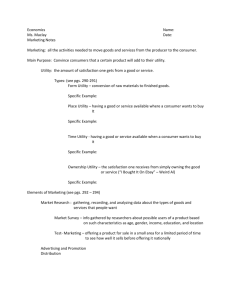Consumer Theory
advertisement

An Introduction to Consumer Theory Lecturer: Luke Miner Email: lminer@nes.ru A. Course Description This course is the first in a sequence of courses on microeconomic theory. The course will introduce students to the workhorse models used by economists to explain consumer behavior. We will start with a formal definition of choice before building up to the utility function. We will go on to study consumer demand in the context of the market. Finally, we will study the consumer’s choice problem when there is uncertainty. B. Course Materials The textbook will be Microeconomic Theory: Basic Principles and Extensions by Walter Nicholson and Christopher Snyder. Any supplemental readings will be announced in class and posted on my.nes. Feel free to ask me for further references on any topic that you find interesting. C. Course Requirements Your grade will be composed of problem sets (20%), a short writing assignment (10%) and a final exam (70%). There will be a total of 5 problem sets. Each is due at the beginning of class one week after it has been assigned. There will be no problem set for the last week of lectures. Only your best four problem sets will count towards your final grade. Problem sets may contain practice problems that will not be graded but you will be given the solutions and you are responsible for these types of problems on the final exam. The short writing assignment will be due during the fourth week of class and a handout describing what is required will be posted to my.nes.ru during the first week of class. The final exam will contain two parts, a short answer section and a problem solving section. If you fail the final exam, you will be given the opportunity to take a make up-exam. The highest grade obtainable on the make-up exam is a 3+. I reserve the right to invoke a mandatory attendance requirement to take the make-up. D. Tentative Course Outline I. Introduction: II. The Consumer’s Choice Problem: 1. Choice 2. Restrictions on Choice 3. Preferences and Utility 4. Maximizing Utility on the Budget Set 5. Duality IV. Demand: 1. 2. 3. 4. 5. Compensated Demand Income and Substitution Effects Elasticity and Demand Relationships among Goods Market Demand and Estimation Consumer Welfare V. Choice under Uncertainty: 1. Expected Utility 2. Risk Aversion











